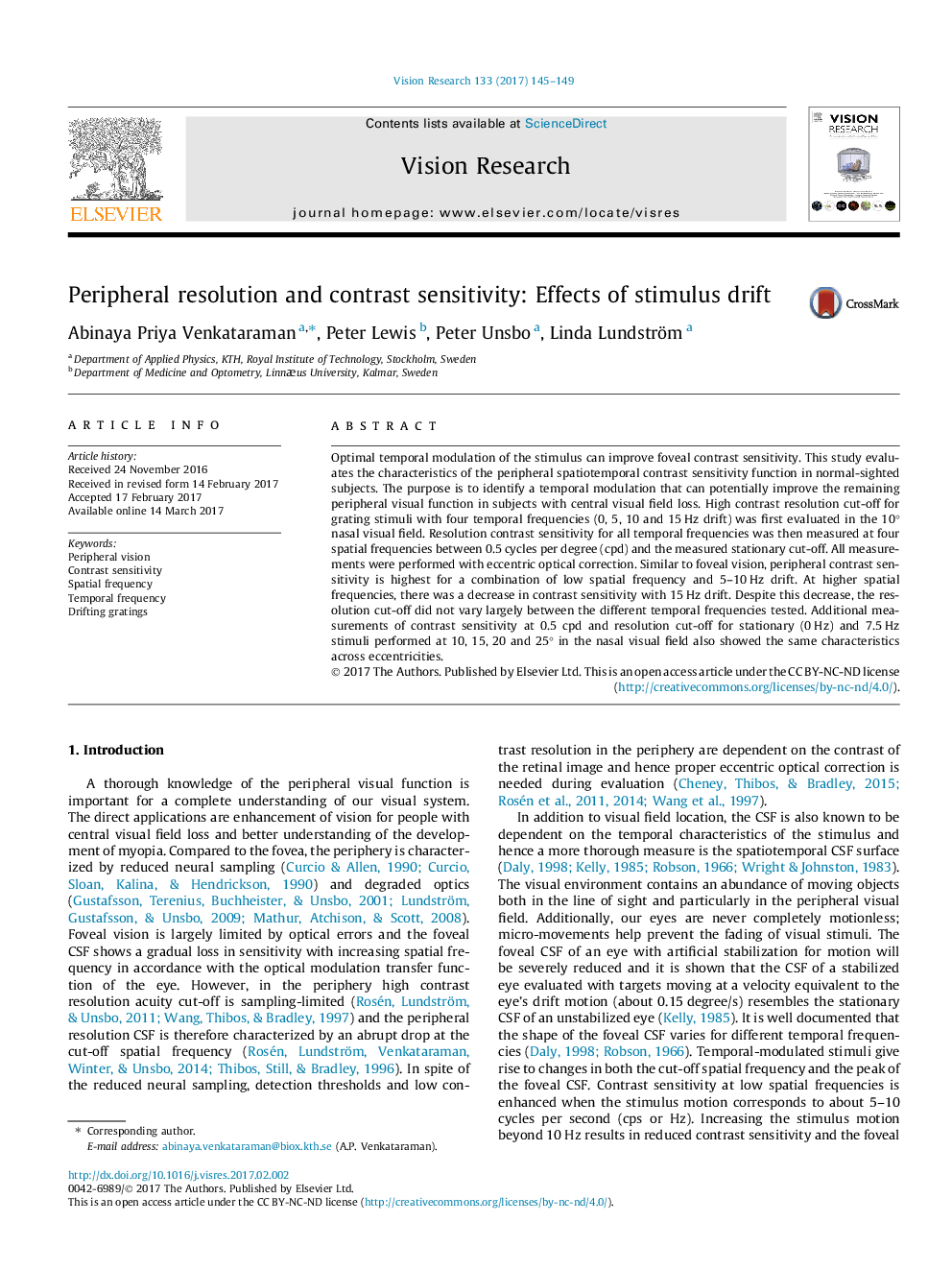| Article ID | Journal | Published Year | Pages | File Type |
|---|---|---|---|---|
| 5705898 | Vision Research | 2017 | 5 Pages |
Optimal temporal modulation of the stimulus can improve foveal contrast sensitivity. This study evaluates the characteristics of the peripheral spatiotemporal contrast sensitivity function in normal-sighted subjects. The purpose is to identify a temporal modulation that can potentially improve the remaining peripheral visual function in subjects with central visual field loss. High contrast resolution cut-off for grating stimuli with four temporal frequencies (0, 5, 10 and 15 Hz drift) was first evaluated in the 10° nasal visual field. Resolution contrast sensitivity for all temporal frequencies was then measured at four spatial frequencies between 0.5 cycles per degree (cpd) and the measured stationary cut-off. All measurements were performed with eccentric optical correction. Similar to foveal vision, peripheral contrast sensitivity is highest for a combination of low spatial frequency and 5-10 Hz drift. At higher spatial frequencies, there was a decrease in contrast sensitivity with 15 Hz drift. Despite this decrease, the resolution cut-off did not vary largely between the different temporal frequencies tested. Additional measurements of contrast sensitivity at 0.5 cpd and resolution cut-off for stationary (0 Hz) and 7.5 Hz stimuli performed at 10, 15, 20 and 25° in the nasal visual field also showed the same characteristics across eccentricities.
